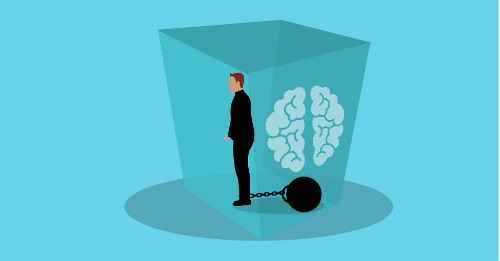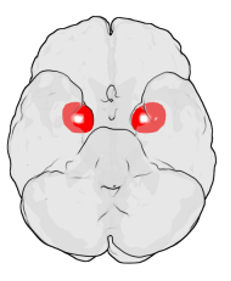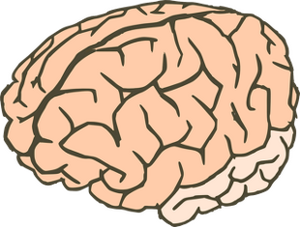How the Human Brain Can Derail or Bolster DEI

By Due Quach, Guest Contributor
Companies have invested hundreds of millions of dollars into diversity, equity, and inclusion (DEI) initiatives since the establishment of the Equal Employment Opportunity Commission (EEOC) in 1964, yet these efforts have been frequently met with resistance or inertia internally. The continued under-representation of women and Black, Indigenous, and People of Color (BIPOC) in senior management and board positions has led to widespread cynicism. Critics often question whether leaders really have the commitment and stamina required to change embedded corporate norms, policies, and behaviors originally designed during an era of patriarchy and segregation to exclude women and minorities and preserve societal inequities. Yet, what if the Achilles heel of DEI is actually the human brain?
The purpose of this article is to share how understanding the human brain can explain why DEI efforts often stumble and more importantly, how to make them more effective. In general, most DEI efforts are not designed to account for how the human brain reacts to external triggers such as risk, change, and uncertainty, difference versus similarity, and power dynamics. Therefore, substantially improved outcomes can be achieved by designing DEI efforts to factor in these considerations and work in harmony with how the human brain becomes mindful and aware of its own patterns.
To shed light on how the brain reacts to triggers and what it takes to examine and rewire patterns, I propose a neuroscience-based framework that outlines three primary patterns of brain activation: Brain 1.0, Brain 2.0, and Brain 3.0. I will also share how DEI initiatives result in different outcomes depending on whether Brain 1.0, Brain 2.0, or Brain 3.0 characterizes the design and implementation of these efforts. Table 1 below provides a high-level summary of how these 3 patterns of brain activation impact DEI efforts.
Table 1: How Brain 1.0, Brain 2.0, and Brain 3.0 impact DEI efforts

DEI in Brain 1.0

Brain 1.0 describes when the brain and body are in a freeze-flight-fight state and the mind functions in self-preservation mode. The key structure of Brain 1.0 is the amygdala, which serves as the brain’s smoke detector for threats—and the term “amygdala hijack” refers to a highly aroused state of Brain 1.0 in which reduced blood flow to the frontal cortex impairs cognition to the point where a person becomes so overwhelmed by a threat (perceived or real) that their brain becomes incapable of taking in new information. When people are in Brain 1.0, they tend to perceive alternative perspectives as a threat, which further escalates Brain 1.0.
I would like to share examples of how Brain 1.0 can lead general managers to make decisions that undermine the long-term health of their organization. For instance, shooting down new ideas because they challenge ingrained conventional wisdom about the way things are done spreads Brain 1.0 throughout an organization, creating a culture of risk-aversion where staff play it safe, keep their head down, and don’t suggest improvements and innovations. During an economic downturn, cutting back investments in staff training and development undermines their ability to serve customers and prompts customers to switch to competitors who continue to improve services.
Historically, the first phase of diversity initiatives were a response to the EEOC and subsequent regulations to prohibit discriminatory hiring and employment practices. Corporations began to issue non-discrimination statements to comply with these regulations and built policies to enforce them internally as a risk-mitigation effort. In general, the initiatives in this first phase were largely designed and implemented in Brain 1.0 to avoid and prevent lawsuits, scandals, investigations, and fines.
Staff tended to react to these initiatives in Brain 1.0 in a defensive, self-protective manner. Many people covered by complying on the surface but created alliances to protect each other from change and uncertainty and exclude outsiders they did not trust. Staff in heightened states of Brain 1.0 intentionally made sure that new hires from marginalized groups did not feel included so they would leave. Rather than thank or elevate whistleblowers, organizations often punished anyone courageous enough to speak out for being disloyal and forced them out of the organization. The threat of retaliation discouraged anyone experiencing or witnessing exclusion and hostility from reporting what was happening. However, these types of toxic environments actually increased the risk of liability.
DEI in Brain 2.0

Brain 2.0 describes when the brain and body are in a reward or goal seeking state and the mind is fixated on achieving a specific outcome. The key structure of Brain 2.0 is the basal ganglia which houses the dopamine system, and often gets locked into tunnel vision focused on things such as enjoying pleasure (especially through addictive substances and experiences), winning a competition, gaining wealth, social status, power, control, praise, popularity, or anything that boosts one’s ego. Brain 2.0 also gets locked into tunnel vision pursuing goals and targets in a mindless manner without questioning if they make sense. The downside is that a strongly activated Brain 2.0 impairs the neural networks for being present and mindful, seeing a bigger picture and long-term view, and attending to information that contradicts what a person wants to or expects to see or hear.
I would like to share examples of how Brain 2.0 can lead general managers to make decisions that result in short-term gains at the very real cost of long-term damage to their business and team. For instance, decisions to boost profitability in the short-term by compromising the quality of source materials almost always result in dissatisfaction and eventual loss of customers. Brain 2.0 can also prompt general managers to game their performance evaluation by taking shortcuts to make their numbers look good before the year-end closes. As these myopic actions unravel in the subsequent fiscal period, the teams find themselves under tremendous pressure to again deliver solid business results.
The second (and current) phase of diversity initiatives are characterized by Brain 2.0. These programs tend to be driven by a desire to “monetize” DEI to grow a company’s top and bottom line by boosting their brand, reputation, community engagement efforts, and by leveraging diverse employees to gain access to new customers, catalyze innovation, and attract and retain top notch talent. To get approval, DEI efforts have to pass the hurdles of: presenting a business case with a compelling return on investment (ROI), making the company look good, and making staff feel good that the company is checking the expected boxes.
However, because of the tunnel vision focus on ROI and checking boxes, these efforts rarely examine and address the structural causes of inequity such as unequal access to education and training, mentorship, sponsorship, growth opportunities, and other resources, and double standards in perceptions and evaluations. As a whole, DEI efforts driven by Brain 2.0 are often more optics than substance, and the phrase “performative DEI” has been coined to describe them.
Staff eventually see through these efforts and become cynical. While they still go through the motions with them, the lack of meaningful change causes staff to disengage. Cringing has become a commonplace reaction when people learn they have to take part in yet another corporate attempt at DEI. Past experiences have taught many employees to think of these sessions as a chore they have to get off their plate and not as a meaningful growth experience to look forward to. DEI in Brain 2.0 also contributes to burn-out and turnover among DEI professionals who want to see their work make a more tangible impact.
DEI in Brain 3.0

Brain 3.0 describes when the brain and body are integrated rather than dissociated, meaning they are not hijacked or impaired by Brain 1.0 or Brain 2.0. The key structures of Brain 3.0 are the prefrontal cortices, which house the neural pathways that enable us to calm and regulate Brain 1.0 and Brain 2.0. Brain 3.0 lights up when we are inspired by a vision and connect to a greater purpose. Brain 3.0 also enables us to create, innovate, and collaborate to achieve that purpose and to master our urges, impulses, and biases so that we act in alignment with our values and aspirations.
I would like to share examples of how Brain 3.0 can lead general managers to make decisions that improve the overall long-term health and standing of an organization. For instance, adopting a customer-centric focus during the development of new products may slow down the product development cycle because it requires more in-depth user-testing and product reiteration. However, this patience results in product offerings that better address customer pain points and higher customer satisfaction, loyalty, and referrals, which drive solid sustainable growth. Similarly, investing in initiatives to improve employee well-being will reduce profitability and efficiency metrics upfront yet lead to increases in staff morale, engagement, and retention, which in turn support improvements in quality of work and customer service, and thus lead to stable improvements in top and bottom line financial performance.
My hope is that the worldwide movement for racial justice catalyzed by the tragic deaths of George Floyd, Ahmaud Arbery, and Breonna Taylor in 2020 ushers in a new phase of DEI in Brain 3.0. In grappling with the ongoing brutality of systemic racism, leaders become more proactive in asking hard questions about why past efforts at DEI have fallen short and how genuine DEI can be achieved—questions that can only be answered using Brain 3.0. Yet even without an understanding of neuroscience, people have started to intuit that what I refer to as Brain 1.0 (fear and shutting down) and Brain 2.0 (tunnel vision and short-sightedness) played some role in the derailing of DEI efforts (and change initiatives in general).
To make progress on DEI, companies have to be intentional about designing initiatives to activate Brain 3.0 (rather than Brain 1.0 and Brain 2.0) in the way the initiatives are designed, communicated, and implemented. Genuine, transformative DEI arises from bringing diverse people together in Brain 3.0 to mindfully examine root causes and interconnections with systemic issues, to exchange perspectives on the challenges and obstacles past DEI efforts ran into, and to form a more complete understanding of what changes in policies, systems, processes, cultural norms, narratives, attitudes and behaviors are required to achieve the desired outcomes.
To navigate obstacles and resistance, organizations have to acknowledge how easy it is for all people to get swept up into Brain 1.0 and 2.0. Thus, they must thoughtfully design DEI efforts in ways that support staff to activate Brain 3.0 to manage triggers that bring them into Brain 1.0 and Brain 2.0 as they move forward along this journey. Building this organizational capacity involves training staff on how to intentionally develop and harness Brain 3.0 to create psychologically safe and inclusive spaces where they can be vulnerable.
How Unconscious Bias Arises from Brain Activation
Understanding how people fluctuate between these three patterns of brain activation also provides the key to deconstructing unconscious bias and thereby further bolstering diversity, equity, and inclusion.
Biases become hard-wired into Brain 1.0 and Brain 2.0 through social conditioning which occurs as children and adults interact with their family, school, community, work environment, and the wider society, and implicitly internalize social narratives and life scripts about what is considered bad (negative) and good (positive). Social narratives refer to one’s beliefs about society, social norms, and what social behaviors are appropriate. Life scripts refer to one’s beliefs about how life should be lived, and what one should do or be like in different stages of life.
Even when biases are unconscious, they are associated with emotional valence, meaning they evoke a negative emotion or a positive emotion. Negative biases (to say no to or avoid something or someone) are encoded in Brain 1.0 whereas positive biases (to say yes to or approach something or someone) are encoded in Brain 2.0.
Together, Brain 1.0 and Brain 2.0 make up what’s called the autopilot or unconscious mind. Humans are programmed by our autopilot to conform to our social conditioning. Brain 2.0 activates (and gives us a squirt of dopamine) when we and people around us conform to our scripts, and Brain 1.0 activates when we and people around us deviate from our social narratives and life scripts. Because of these mechanisms, people tend to mindlessly follow their social narratives and life scripts on autopilot. People also tend to get uncomfortable and upset when someone disagrees with or does not conform to their social narratives and life scripts without realizing that social narratives and life scripts are specific to each person’s social conditioning and thus vary by generation, family, culture, society, socioeconomic status, region, etc.
When Socrates said, “The unexamined life is not worth living,” he was exhorting people to become aware of and examine the social narratives and life scripts they internalized. This translates to using the networks for meta-awareness in Brain 3.0 to observe how the voice in our head “narrates” our social narratives and life scripts and become aware of the patterns that got programmed into our autopilot. By developing meta-awareness to discern when Brain 1.0 is activated, we can become aware of and examine a negative bias, impulse, narrative, or script, and by discerning when Brain 2.0 is activated we can become aware of and examine a positive bias, impulse, narrative, or script. This awareness then empowers us to mindfully make wiser decisions using Brain 3.0.
The Calm Clarity Approach to Harnessing Brain 3.0 to Deconstruct Unconscious Bias and Enhance DEI
To help people and organizations build the capacity to harness Brain 3.0, I created the Calm Clarity “Deconstruct Unconscious Bias Using Neuroscience and Mindfulness” training which is now available as an online course. The structure of this training is built upon a 4-step approach captured by the acronym NOTE.
- (N): Notice, involves identifying the subtle signs of bias arising by using Brain 3.0 to become aware of when Brain 1.0 and Brain 2.0 are activated by bias. This becomes easier as people learn to recognize what bodily sensations, emotions, and narratives are associated with Brain 1.0 and Brain 2.0.
- (O): Open, involves using curiosity to open one’s mind to explore the biases that have been hard-wired through social conditioning, narratives, and life scripts into Brain 1.0 and Brain 2.0, which together make up what’s called the autopilot.
- (T): Tune In, involves compassionately holding space to process charged emotions. This is important because conversations around bias can trigger amygdala hijacks by resurfacing past experiences of trauma, stigma, stereotyping, and shame. During these moments, it is critical to use Brain 3.0 to calm the amygdala and create a sense of safety and caring.
- (E): Engage, involves using reliable tools and techniques to further activate neural pathways in Brain 3.0 that enable people to integrate their whole selves as human beings and to see each other as human beings. When a group of people intentionally support each other to engage in Brain 3.0 together, they are able to embody their core values and respond with wisdom and compassion to create a more effective, genuinely inclusive, and collaborative path forward.
Wherever you and your organization stand in your journey to address unconscious bias and increase diversity, equity, and inclusion, harnessing Brain 3.0 will enable you to create transformative outcomes. When teams are able to spend more time in Brain 3.0, this will also result in improved decision-making, learning, collaboration, service delivery, problem-solving, and innovation because Brain 3.0 outperforms Brain 1.0 and Brain 2.0.
Due Quach (pronounced "Zway Kwok") is the author of Calm Clarity: How to Use Science to Rewire Your Brain for Greater Wisdom, Fulfillment, and Joy, one of Fast Company’s best business books of 2018. Due founded two social ventures that tackle systemic inequity: Calm Clarity and the Collective Success Network. Having started life in poverty as a refugee in inner-city Philadelphia, Due turned to neuroscience to heal the long-term effects of trauma, graduate from Harvard College and the Wharton School of Business, and build a successful international business career in management consulting, private equity, and social impact investments. Since starting Calm Clarity, she has dedicated her life to creating social impact using neuroscience. Due’s extraordinary story is featured in The Portal, a documentary film about meditation as a portal for healing and transformation.
A version of this article was first published in February of 2021

0 comments
Leave a comment